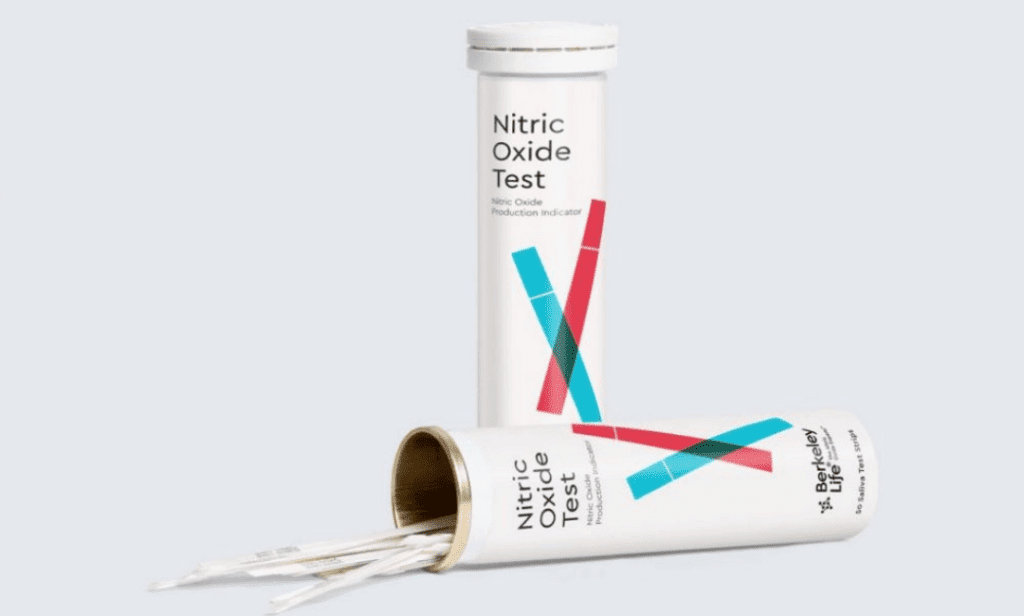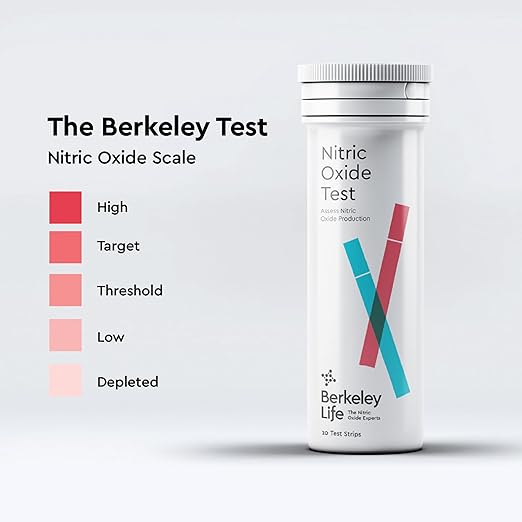
Understanding Nitric Oxide Test Strips
A rewrite of: https://kiyalongevity.com/nitric-oxide-test-strips/
When it comes to naturopathic medicine, there are many compounds within the body that, when interpreted correctly, can provide exceptional insight into our health. Nitric oxide is one such molecule.

With influence over the cardiovascular and endocrine system, nitric oxide keeps your blood flowing easily while also readying your muscles for exercise and activity. There’s a reason why naturopathic doctors recommend monitoring your nitric oxide levels: this one compound can have an immense influence on the health of your body as a whole. However, nitric oxide levels can decline for a variety of reasons, often without you knowing.
Enter nitric oxide test strips, a simple way to monitor your nitric oxide levels so you can adjust your lifestyle and stave off disease and dysfunction accordingly. You won’t know there’s a need to take action without knowing your nitric oxide levels, and nitric oxide test strips can help.
Key Takeaways
- Nitric oxide is a vasodilator that widens the blood vessels, letting blood, oxygen, hormones, and other important compounds flow easily.
- By measuring your nitric oxide levels, you can better monitor your diet, optimize your workout performance, and detect health issues earlier.
- Nitric oxide test strips change color when in contact with your saliva—the darker the color, the more nitric oxide in your body.
What is Nitric Oxide?
Nitric oxide (NO) is a naturally produced compound that plays some crucial roles in the circulatory, endocrine, and muscular systems.
As a vasodilator, nitric oxide relaxes the muscles inside the blood vessels, which allows them to widen. Wider blood vessels then allow blood to flow more easily, lowering blood pressure and letting blood bring its crucial components (e.g., oxygen, immune cells) and tag-along hormones throughout the body.
Not only does nitric oxide contribute to the health of the cardiovascular system, but it also allows your muscles to receive the oxygen they need to complete their tasks, with more oxygen equating to more energy.
With this whole-body influence, nitric oxide levels are often taken into consideration when gauging your health from a naturopathic standpoint.
The Benefits Of Measuring Nitric Oxide Levels
While our body naturally produces nitric oxide, its production can decline due to aging, poor diet, lack of exercise, or certain medical conditions. Even more, you likely won’t know that you have low nitric oxide without testing.
Beyond increasing your knowledge of the inner health of your body, knowing your nitric oxide levels can offer the following benefits:
Monitor Your Diet
Our diet significantly influences nitric oxide production, with foods high in nitrates, antioxidants, L-arginine, and L-citrulline boosting nitric oxide production and keeping nitric oxide from being broken down so quickly by the body.
If your nitric oxide levels are low, it may indicate that your diet is missing key foods that provide the body with the ingredients it needs to produce nitric oxide. With the addition of certain foods and another test strip, you can see if your diet is the cause of your low nitric oxide levels.
As for what foods to eat, leafy green vegetables (e.g., spinach, lettuce, arugula), beets, and celery are high in nitrates, protein-rich foods can supply your body with L-arginine, and pumpkin, squash, cucumbers, and melons offer L-citrulline.
Optimize Workout Performance
Nitric oxide supports the higher oxygen need of your muscles when exercising. Not only does this improve your workout performance, but bringing more oxygen to your muscles can also aid them during recovery, allowing your body to be ready for the next workout sooner.
When athletes and fitness enthusiasts measure their NO levels, they can optimize their dietary and supplementation strategies to keep their NO levels high and improve their performance outcomes by directly supporting their muscles.
Detect Potential Health Issues
NO test strips allow you to screen for a significant contributor to multiple medical concerns: low nitric oxide levels.
Poor nitric oxide levels are often associated with health concerns such as diabetes, heart disease, and erectile dysfunction. By measuring your nitric oxide levels and detecting that they are low, you can see if there is a risk of other health concerns based on nitric oxide levels.
Furthermore, low nitric oxide levels may result from another health condition. For instance, endothelial dysfunction is characterized by low nitric oxide production but is also associated with cardiovascular concerns, making nitric oxide levels the shared (and easily measured) link between the two. Measuring nitric oxide levels can detect health concerns early, when interventions are simpler and positive health outcomes are more likely.
How do Nitric Oxide Test Strips Work?
Nitric oxide test strips are easy to use. Simply apply saliva to the strip, and then watch the color change as the chemicals on the strip react with the nitrates and nitrites—both of which are used in nitric oxide production—in the saliva, changing colors to reflect how many are present.
Nitric oxide test strips are not an exact measurement of nitric oxide levels, but their ease of use allows for quick surveillance of the compounds that become nitric oxide.
The test strips have five categories: depleted, low, threshold, target, and high. These categories get darker in color as more nitrates and nitrites are detected.
Steps for Using Nitric Oxide Test Strips
Using nitric oxide test strips is a simple process, but there are a few tips to ensure that the results you see are as accurate as possible:
- Ensure optimal testing conditions. Avoid consuming anything but water for at least 2 hours before your test. Eating or drinking anything else may affect your results since the test utilizes saliva.
- Collect saliva. Place the test strip on your tongue or spit into a cup and hold the test strip in the saliva. Check the instructions on your test strip bottle to see how long you should keep the test strip in the saliva, but it’s typically for only a few seconds.
- Interpret results. Once the saliva has interacted with the test strip for the specified time, hold the test strip to the color guide and see which category you fall into.
- Take action. Depending on the results of your nitric oxide test, take action. If your nitric oxide levels are lower than the target amount, try adding more nitric oxide-boosting foods to your diet, exercising more, or taking supplements.
Step four is the most important, as test results alone will not invoke change; you need to take action. If you’re unsure how to improve your nitric oxide levels, contact Kiya Longevity for a naturopathic consultation. Our doctors will help you find the cause of your low nitric oxide levels and suggest lifestyle changes to boost them.
Since low nitric oxide levels can be a risk factor for other health concerns, reaching out to a naturopathic doctor can also help you screen for these conditions. By knowing that low nitric oxide levels are contributing to the disease’s development, Kiya Longevity can help you address, and potentially reverse, these diseases if they are present.
If you’re ready to take charge of your health, reach out to Kiya Longevity.
References
Hirai, D. M., Copp, S. W., Ferguson, S. K., Holdsworth, C. T., McCullough, D. J., Behnke, B. J., Musch, T. I., & Poole, D. C. (2012). Exercise training and muscle microvascular oxygenation: functional role of nitric oxide. Journal of applied physiology (Bethesda, Md. : 1985), 113(4), 557–565. https://doi.org/10.1152/japplphysiol.00151.2012
Król, M., & Kepinska, M. (2020). Human Nitric Oxide Synthase-Its Functions, Polymorphisms, and Inhibitors in the Context of Inflammation, Diabetes and Cardiovascular Diseases. International journal of molecular sciences, 22(1), 56. https://doi.org/10.3390/ijms22010056
Leslie SW, Sooriyamoorthy T. Erectile Dysfunction. [Updated 2024 Jan 9]. In: StatPearls [Internet]. Treasure Island (FL): StatPearls Publishing; 2024 Jan-. Available from: https://www.ncbi.nlm.nih.gov/books/NBK562253/
